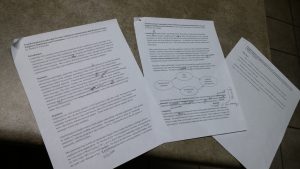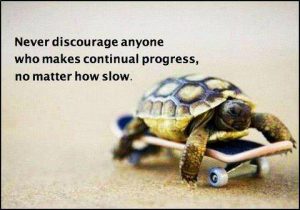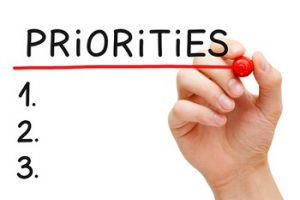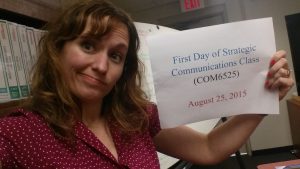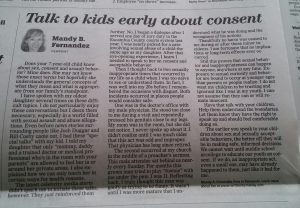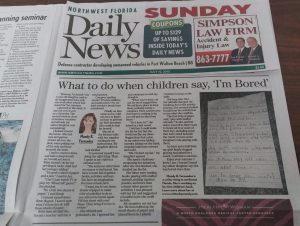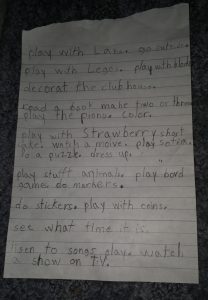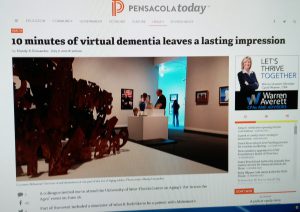Be a Better, More Successful Partner

During an employee conference break last week, I noticed I had voicemail blinking on my cell phone. I listened to the message. It said the following:
“Thank you again for all the help you’ve given me with this project of ours. I took your words and thoughts into account. You made my story better. You’ve really improved it and I just wanted to tell you that…”
Those very kind words were made by my writing project partner (and co-author), S.R. Her phone call to me immediately brought a smile to my face. Ms. S.R. lives in Texas. We have never met but we were paired up together for a special writing assignment. My role was to help her tell an important story, to act as an editor and co-writer for her personal, emotional experience. That story, along with others, is set to be published by Oxford Press in 2017. I listened to her message to me three times. What a thoughtful gesture!
Since then I have been reflecting on the recent and long-term partners in my life, from my 13-year successful marriage to my current, short-term graduate school class partner projects. What makes for a good partnership? Whether in business, education, personal setting or the workplace, we are all paired up with people. In some instances, we can choose our partners (marriage, friendship, some class projects). In other cases, we have no choice (work, school, etc.).
Here are eight tips that have been instrumental to me in my triumphant partnerships. These are 8 ways to have better partner success and achieve a more valuable outcome:
1. Determine the goal in the beginning and keep that objective in mind throughout the duration of the partnership.
My husband and I created a bucket list just a few short years into our marriage. What did we both want? What would make us happy, besides each other? When I work on a graduate school project, I think in the same terms. What is the goal of the assignment? To get an “A” sure, but what else? What do I need to apply and what lessons can I learn or share during the task? In business, what is the short term and long term goals? Increase sales? Gain new clients? Have these discussions with your partner right away so everyone can remain on track to achieving the goals.
2. Prioritize the work – the needs and the wants.
What needs to happen? What do you want to happen? There is a distinction. How can you and your partner work together to incorporate desires with the essentials? Create a timeline. Set due dates for the goals you want to achieve but be flexible when and if you can. Communicate often as the needs and wants change over time.
3. Be strong when the other is weak. Take up the slack.
Not every person will put forth 100% all of the time. Your partner may be dealing with other issues. When your partner is doing everything she or he can be doing, step up. Take the lead. If you show effort and that you won’t let the partnership or project fail, your partner may come around and join you. Try not to take it personal. Sometimes others need to be taught how to be effective, how to care and how to be diligent. Show the other person how to do that and see if they will follow suit. I found this especially important in marriage and friendships. One person may often need a break before burnout occurs. Give that person a chance to regroup and then prompt him or her to jump in again.
4. Realize that others may not take it as seriously as you.
This is a hard lesson to learn but it is an important one. If you’re part of a business project or class assignment, you may find someone isn’t putting forth the same amount of time and effort that you are doing. If you don’t have a choice, you just have to stumble through it. Be the better person and do what needs to be done. The partner may not care as much as you do about receiving that “A” or that success. You are still part of a team and it’s still up to someone to carry the team when others cannot or will not make the effort. Keep in mind that the partnership may be temporary and that you may have the opportunity to have a different partner later.
5. Let someone choose you.
In my most recent class, I had two different classmates choose me to partner for a paper swap and a case study project. Before I could look around the room and try to pick someone on my own, I had an individual turn to me and ask, “Want to be partners?” I graciously accepted. I was flattered and saw it as an opportunity to collaborate. In one case, I see me doing more to help the other person. That’s okay. It’s teaching me valuable lessons about myself and my role. In the other instance, I know the person helped me out far more than I was able to help her. There will be a give and take and not always a balance. (See Point # 3)
6. If your partner drives you crazy…
If it’s a situation where you did not choose your partner and that person is driving you crazy, take a step back. Take a few breaths and pause. What is it about the person that is making you bonkers? Is the person passionate but going about it in a different way? Go back to Point # 1. What is the goal or main objective? Then follow Point # 2. Prioritize. If you can think in these terms, of getting the work done, rather than letting personal differences get in the way, everyone will be better and the goal can be achieved. In addition, a change of scenery is always a good option too. Join the partner for coffee or lunch or dessert. Step away from the project duties and have a laugh or two!
7. If your partner is absent…
What about if the partner you are paired with is just unresponsive? What if she or he just isn’t communicating at all? Every case may need to be handled differently. Perhaps even a supervisor may need to get involved. But before you dive into that awkward situation, have you done your part? Have you outlined the project? Have you set the goals, recognized the deadlines and made at least three attempts to communicate with the other person? And not just a text message? Did you phone, email and even try to show up in person to see the partner (if feasible)? Make sure you’ve done your part and made all attempts to communicate first. Then follow Point # 3. Take up the slack. Keep in mind Point # 4. Others may not be as serious as you are about the goal and sometimes that is okay and you cannot change a mindset. Put forth your best effort and keep the communication lines open.
8. Don’t give up! Continue to problem-solve.
The last tip I have is the most vital one in any partnership. Don’t give up! Have you done everything you possibly can do to make the goal work? Have you problem-solved creatively to find a solution? Can you bring in another person as a mediator to offer a new perspective? Every partnership will hit bumps in the road. Nothing is always perfect or easy. The struggles will help you appreciate the end results. Or they will at least teach you about your own versatility.
———-
Good luck in all the partnerships you have in your life. Choose your pair wisely or make the best of who you may be matched with at various stages and ages throughout existence.

